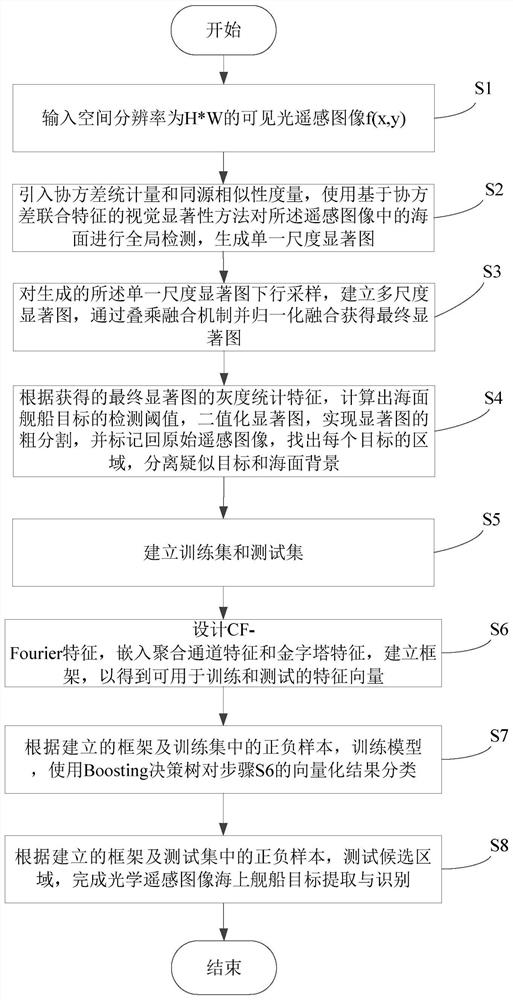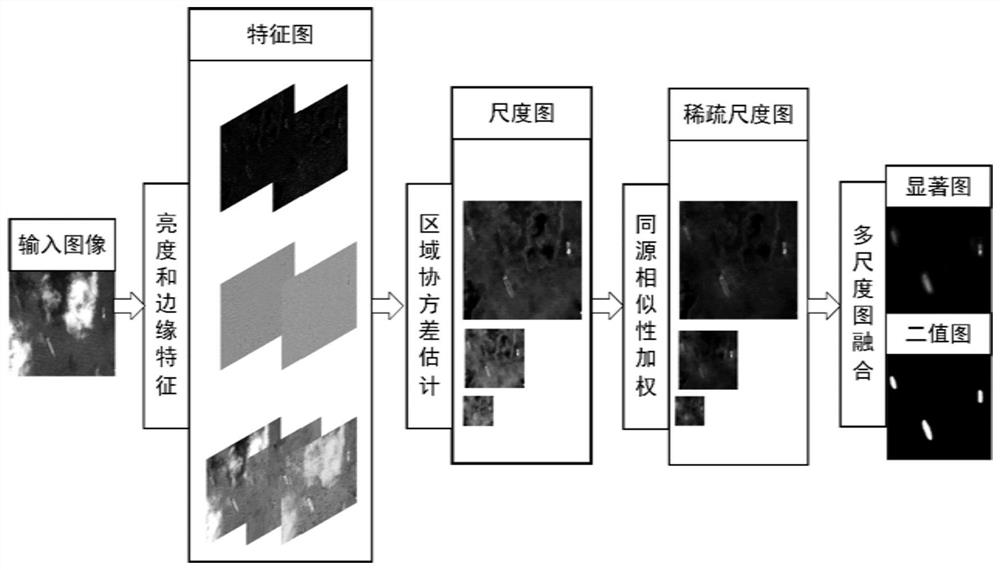Optical remote sensing image marine ship target extraction and identification method
A technology of optical remote sensing images and remote sensing images, applied in scene recognition, character and pattern recognition, instruments, etc., can solve the problems of reduced homogeneity of ship targets, high false alarm rate, low detection efficiency, etc., and achieve suppression of sea background Effects of interference, increased automation, and improved detection accuracy
- Summary
- Abstract
- Description
- Claims
- Application Information
AI Technical Summary
Problems solved by technology
Method used
Image
Examples
Embodiment Construction
[0068] The present invention will be described in further detail below with reference to the accompanying drawings and specific embodiments.
[0069] see figure 1 , figure 2 As shown, it is an operation flow chart of a preferred embodiment of the method for extracting and recognizing marine vessel targets from optical remote sensing images of the present invention.
[0070] Step S1, input a visible light remote sensing image f(x, y) with a spatial resolution of H*W. in particular:
[0071] Input the optical remote sensing image f(x, y) with a spatial resolution of H×W. The remote sensing image includes ships, sea fog, thick clouds, islands, etc., among which the size and color polarity of the ships are different. , the location distribution on the sea surface is also very random.
[0072] Step S2, introducing covariance statistics and homology similarity measures, and using a visual saliency method based on covariance joint features to globally detect the sea surface in t...
PUM
 Login to View More
Login to View More Abstract
Description
Claims
Application Information
 Login to View More
Login to View More - R&D
- Intellectual Property
- Life Sciences
- Materials
- Tech Scout
- Unparalleled Data Quality
- Higher Quality Content
- 60% Fewer Hallucinations
Browse by: Latest US Patents, China's latest patents, Technical Efficacy Thesaurus, Application Domain, Technology Topic, Popular Technical Reports.
© 2025 PatSnap. All rights reserved.Legal|Privacy policy|Modern Slavery Act Transparency Statement|Sitemap|About US| Contact US: help@patsnap.com



